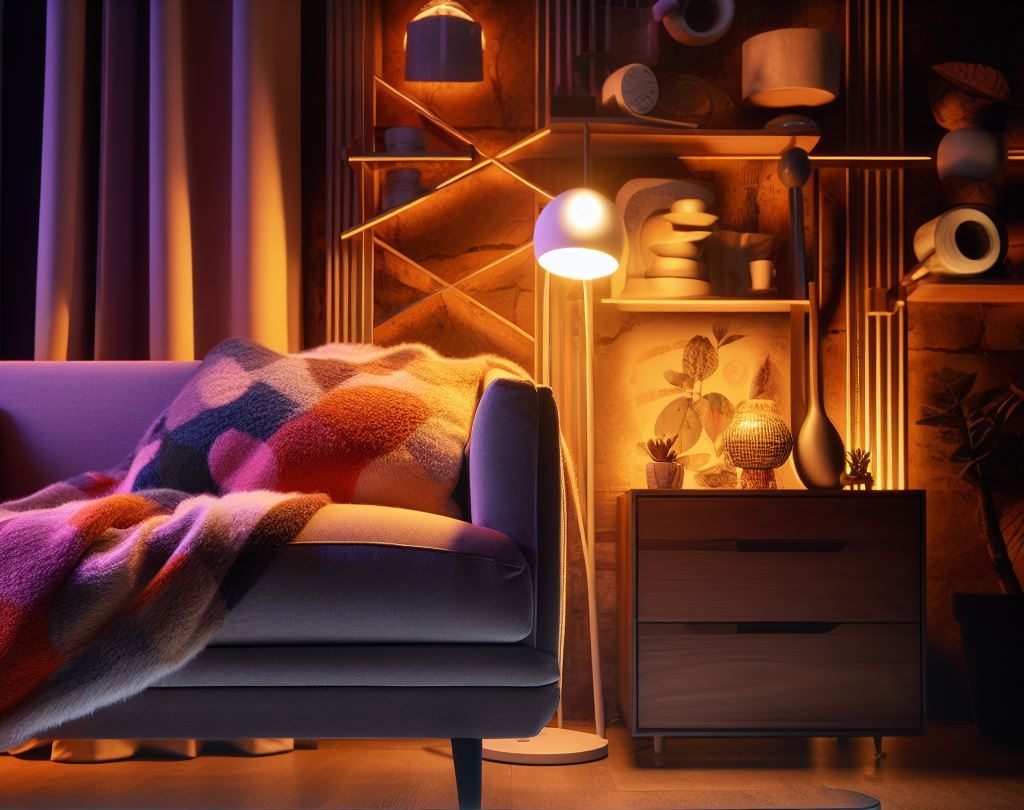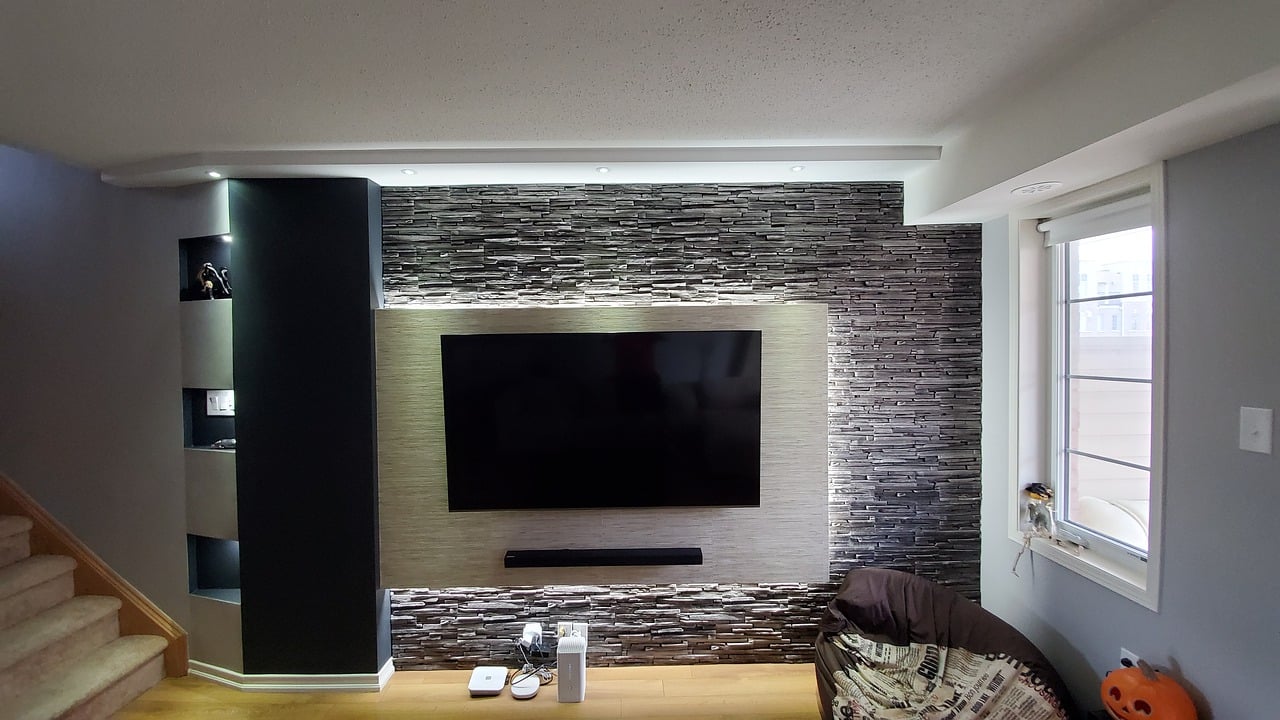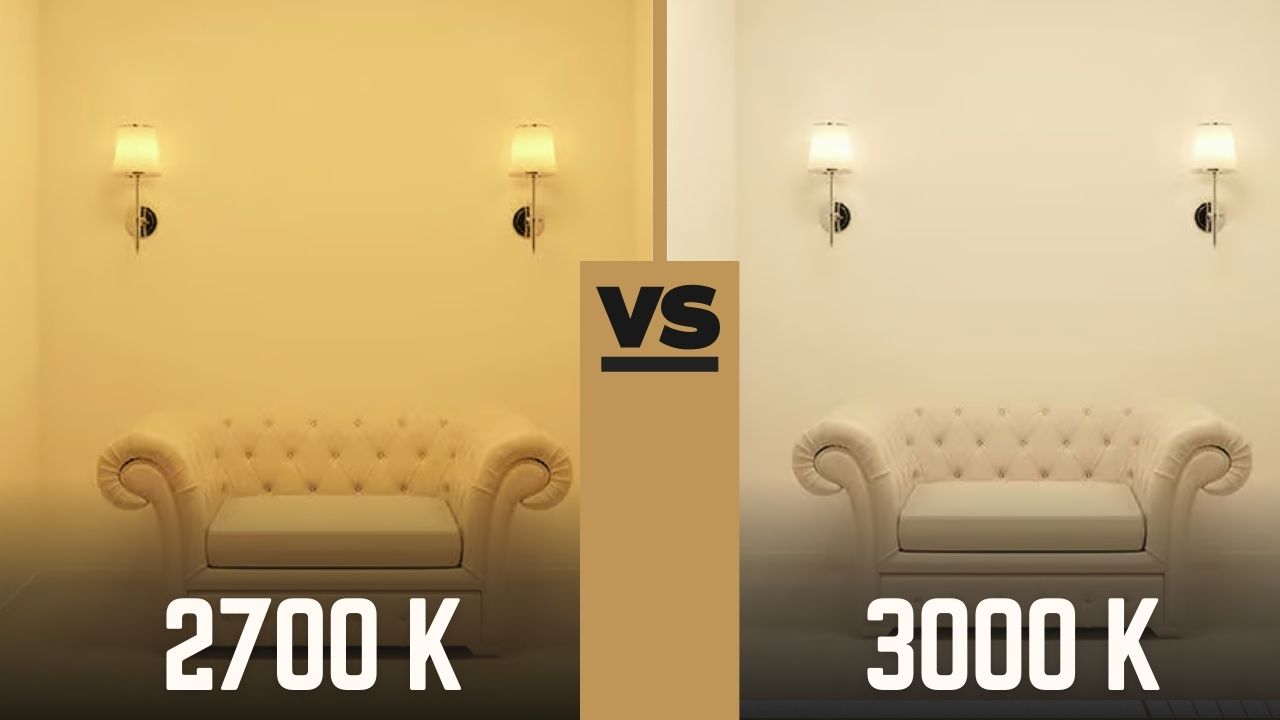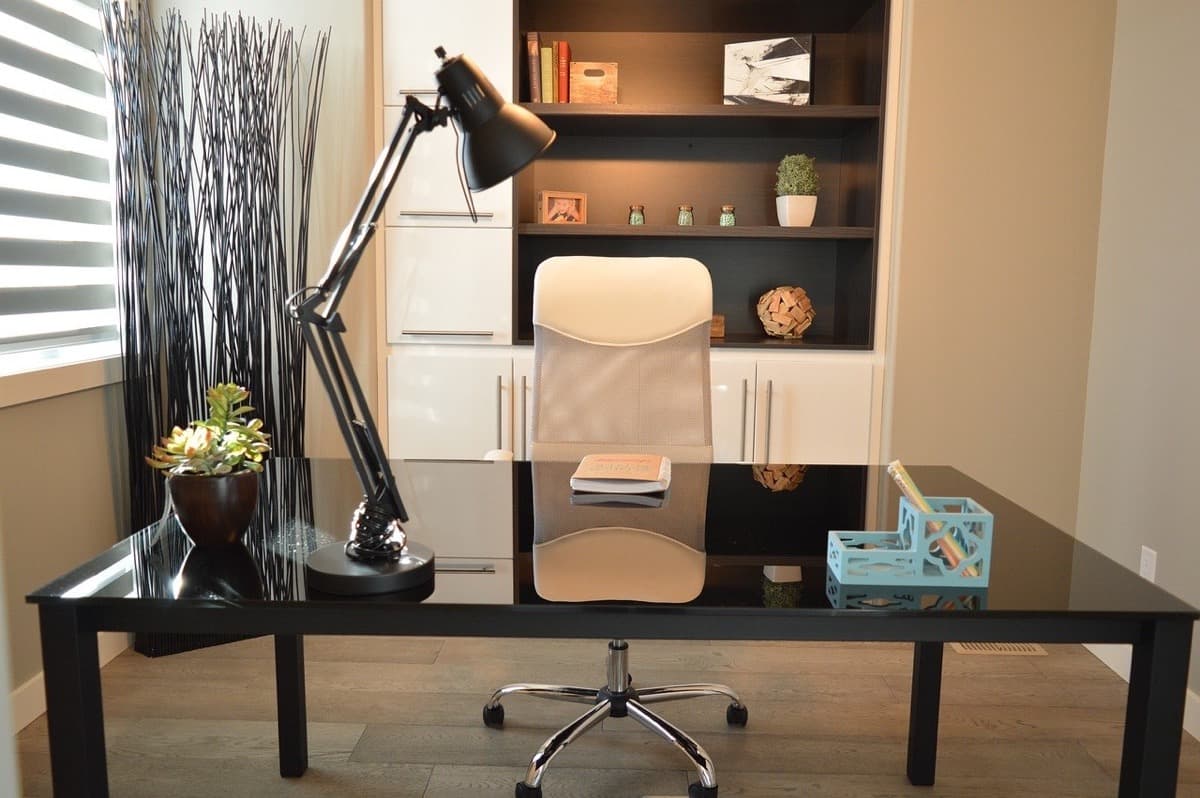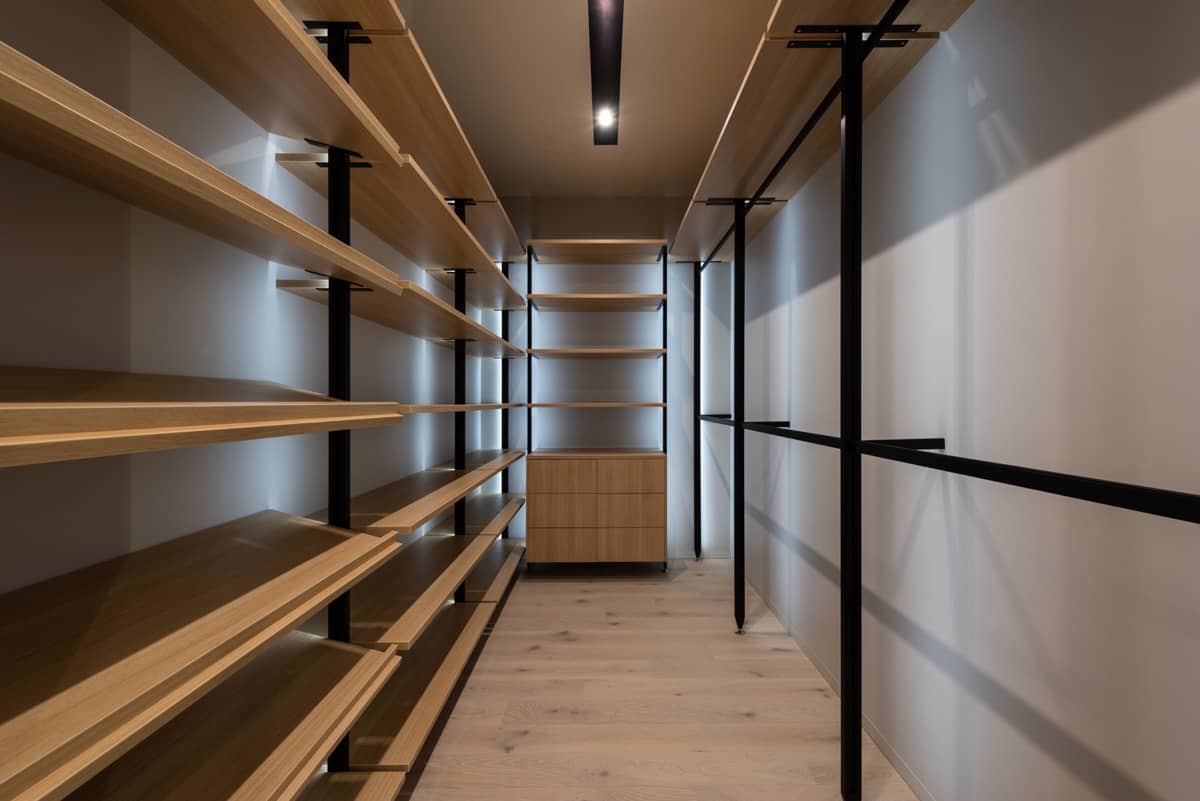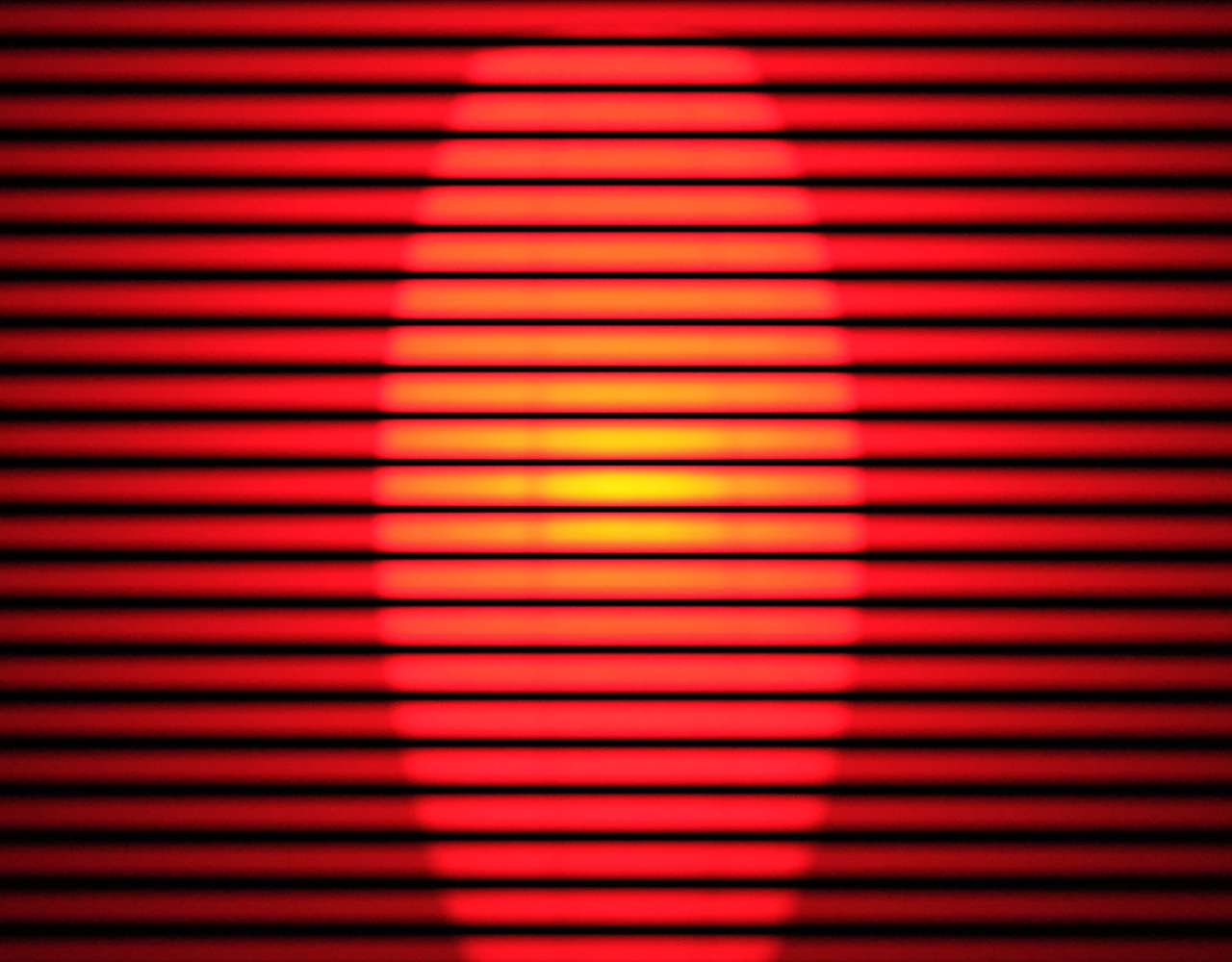Color temperature is an essential aspect of room design that often goes unnoticed. It refers to the perceived warmth or coolness of light, measured in kelvin (K), emitted by a light source.
While color temperature is commonly associated with lighting, its influence extends far beyond mere illumination. By carefully considering color temperature during the design process, one can enhance the ambiance and overall aesthetic appeal of a room.
Definition of Color Temperature
Color temperature is determined by the spectral distribution of visible light emitted by a light source when heated to a specific temperature. It is measured on the Kelvin scale, which begins at absolute zero (-273 degrees Celsius) and extends infinitely upwards. Higher Kelvin values represent cooler or bluish tones, while lower Kelvin values indicate warmer or reddish hues.
For example, incandescent bulbs produce a warm glow at around 2700K, creating a cozy atmosphere reminiscent of candlelight. On the other hand, fluorescent or LED lights emit cooler white tones with higher Kelvin values ranging from 4000K to 6500K.
The concept of color temperature originates from physics and applies to both natural and artificial lighting sources. Understanding this fundamental principle allows designers and homeowners to make informed decisions about the type of lighting they choose for each room.
Importance of Color Temperature in Room Design
The significance of color temperature lies in its ability to evoke specific emotions and create desired moods within a space. When selecting lighting for different rooms, it’s crucial to consider their intended purpose and how people interact within those spaces. In living rooms or areas designed for relaxation and socializing, warm tones with lower Kelvin values (around 2700K-3000K) are ideal as they promote comfort and intimacy.
These hues create a welcoming ambience, making inhabitants and guests feel at ease. In contrast, areas where tasks such as cooking or reading take place, like kitchens or home offices, benefit from cooler white tones with higher Kelvin values (3500K-5000K).
This provides clarity and concentration by mimicking natural daylight and enhancing visibility. Subtle variations in color temperature can significantly impact productivity levels and overall well-being in these spaces.
By considering the color temperature of lighting fixtures, designers can transform a room’s atmosphere, influencing the emotions felt within that space. The strategic use of warm or cool lighting can enhance the functionality of each room while creating a visually appealing environment that complements its intended purpose.
Understanding Color Temperature
Color temperature plays a crucial role in the overall design and ambiance of a room. It refers to the perceived warmth or coolness of light emitted by a particular source, measured in Kelvin (K) on the Kelvin scale.
Understanding color temperature requires grasping the relationship between Kelvin values and the resulting color tones. The Kelvin scale is a metric used to measure temperature, including that of light sources.
The concept of color temperature originated from observing heated metal objects: as they were heated, their colors changed progressively. A lower Kelvin value corresponds to warmer colors, while higher Kelvin values indicate cooler colors.
| Color Temperature | Kelvin (K) | Description | Examples |
|---|---|---|---|
| Very warm white | 2000-3000 | A soft, yellow-tinged light that is often used in living rooms and bedrooms. | Candlelight, incandescent bulbs |
| Warm white | 3000-4000 | A slightly whiter light than very warm white, but still with a yellow tint. It is often used in kitchens and bathrooms. | Halogen bulbs, fluorescent bulbs |
| Neutral white | 4000-5000 | A white light that is neither too warm nor too cool. It is often used in offices and other commercial spaces. | Natural sunlight, daylight bulbs |
| Cool white | 5000-6500 | A slightly bluish-tinted white light that is often used in task lighting or areas where you need to focus. | LED bulbs, metal halide bulbs |
| Very cool white | 6500-10000 | A very white light with a strong blue tint. It is often used in industrial settings or where you need a very bright light. | Xenon bulbs, arc lights |
Differentiating between Warm and Cool Colors
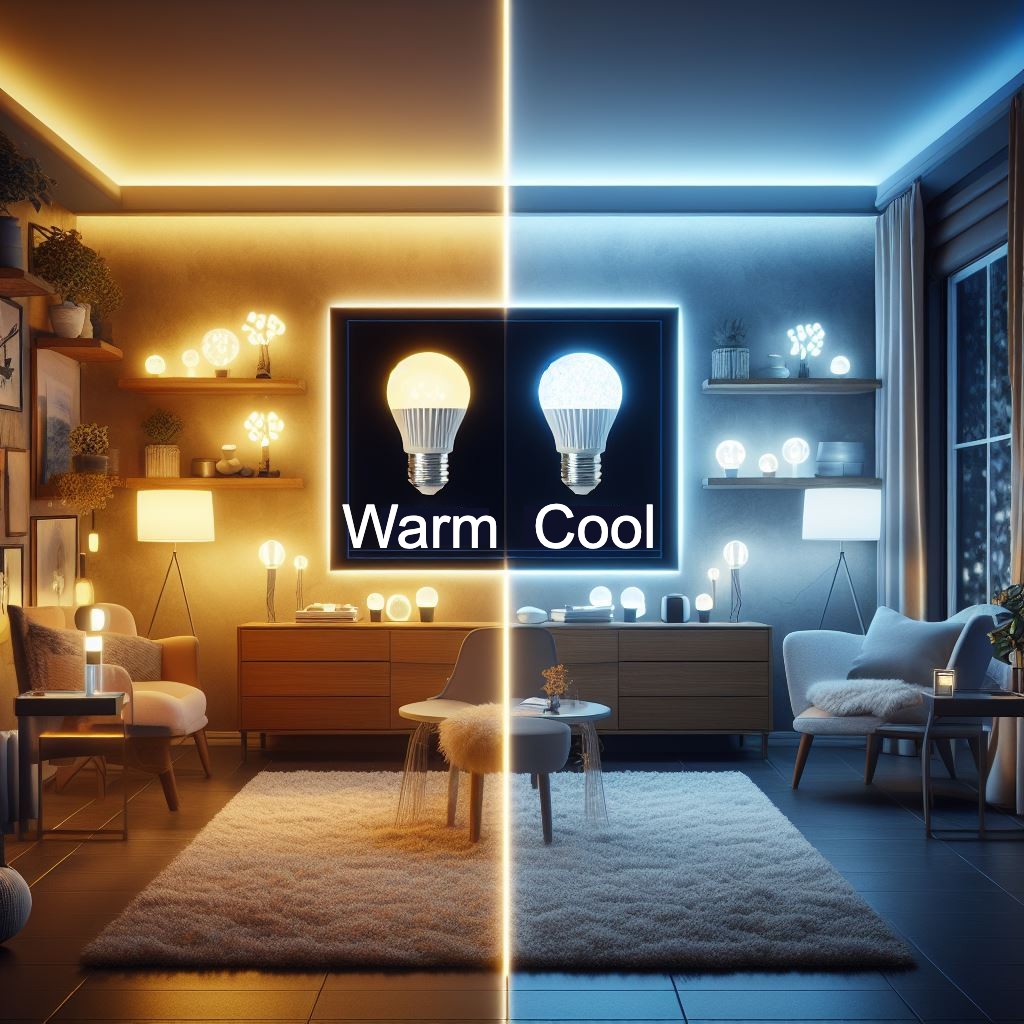
Warm colors are associated with lower Kelvin values and tend to evoke feelings of coziness and intimacy. Reds, oranges, and yellows fall into this category.
These warm hues have an inherent ability to create an inviting atmosphere that is perfect for spaces where relaxation and comfort are desired. Cool colors, on the other hand, possess higher Kelvin values and include shades like blues, greens, and purples.
They offer a sense of calmness and serenity in interior spaces. By infusing cool lighting tones into a room’s design scheme, one can create an environment that feels more refreshing and invigorating.
Warm Colors (Lower Kelvin Values)
Incorporating warm lighting hues with lower Kelvin values – typically ranging from 2000K to 3000K – can transform any space into a cozy retreat. Reddish tones evoke feelings of warmth while orange hues add vibrancy to the surroundings. Yellow shades create a radiant glow that mimics natural sunlight during golden hours.
When used appropriately in living rooms or bedrooms, warm lighting can nurture social interactions or provide comfort during downtime activities such as reading or relaxing. These colors help create an inviting and intimate atmosphere that encourages conversation and relaxation.
Cool Colors (Higher Kelvin Values)
Cool lighting, with higher Kelvin values typically ranging from 4000K to 6500K, offers a sense of tranquility and freshness. Blue tones imbue a space with a calming effect, reminiscent of cool water or clear skies. Green shades emulate the soothing qualities of nature, promoting feelings of harmony and balance.
Purple hues can add an air of mystery or create a royal ambiance. These cooler colors are ideal for areas where concentration, focus, or reflection are required.
Spaces like offices or study rooms benefit greatly from cool lighting as it enhances alertness and productivity by reducing eye strain. Additionally, cool lighting can be utilized in bathrooms to provide a refreshing atmosphere akin to a spa-like experience.
| Characteristic | Warm Colors | Cool Colors |
|---|---|---|
| Color | Yellow, orange, red | Blue, green, purple |
| Kelvin scale | 2,700K or below | 4,000K or above |
| Atmosphere | Cozy, inviting, relaxing | Energetic, refreshing, focusing |
| Examples | Candlelight, incandescent bulbs, halogen bulbs | Fluorescent bulbs, daylight bulbs, LED bulbs |
| Applications | Living rooms, bedrooms, dining rooms | Kitchens, bathrooms, offices, workspaces |
Choosing the Right Color Temperature for Each Room
Living Room
The living room is the heart of any home, where relaxation and comfort are paramount. To create an inviting atmosphere in this space, it is essential to choose the right color temperature for lighting.
Optimal color temperature range for the living room falls between 2700K and 3000K. This range offers warm lighting tones that induce a sense of coziness and relaxation.
Warm colors like soft yellows, oranges, and reds create a soothing ambiance, perfect for unwinding after a long day or hosting intimate gatherings with friends and family. By incorporating warm light sources such as incandescent or LED bulbs with lower Kelvin values within this range, you can achieve a serene and welcoming living room environment.
Dining room
The dining room is a place where you gather with family and friends to enjoy meals and conversation. You want the lighting to be warm and inviting, but you also need to be able to see clearly. A color temperature of 3000K to 3500K is ideal for the dining room. This will create a warm and cozy atmosphere without making the space feel too dark.
If your dining room has a lot of natural light, you can get away with a cooler color temperature. However, if the room is mostly dark, you’ll need a warmer color temperature to create a more inviting atmosphere.
You can also use different light sources to create different moods in your dining room. For example, you could use a chandelier for general lighting and table lamps for task lighting. This will allow you to adjust the lighting to suit the occasion, whether you’re having a casual dinner with friends or a formal dinner party.
Kitchen
The kitchen is not only a functional space but often serves as the hub of activity in many households. When it comes to choosing color temperature for kitchen lighting, striking a balance between task lighting and overall ambiance is crucial.
The optimal color temperature range for kitchens falls between 3500K and 4000K. This range offers cool white tones that enhance clarity and focus, making it easier to perform tasks such as food preparation or cooking.
Cool colors like blues, greens, and purples provide an energizing effect that keeps you alert while working in the kitchen. By selecting LED bulbs or fluorescent lights within this color temperature range, you can create a well-lit space that combines functionality with a vibrant atmosphere.
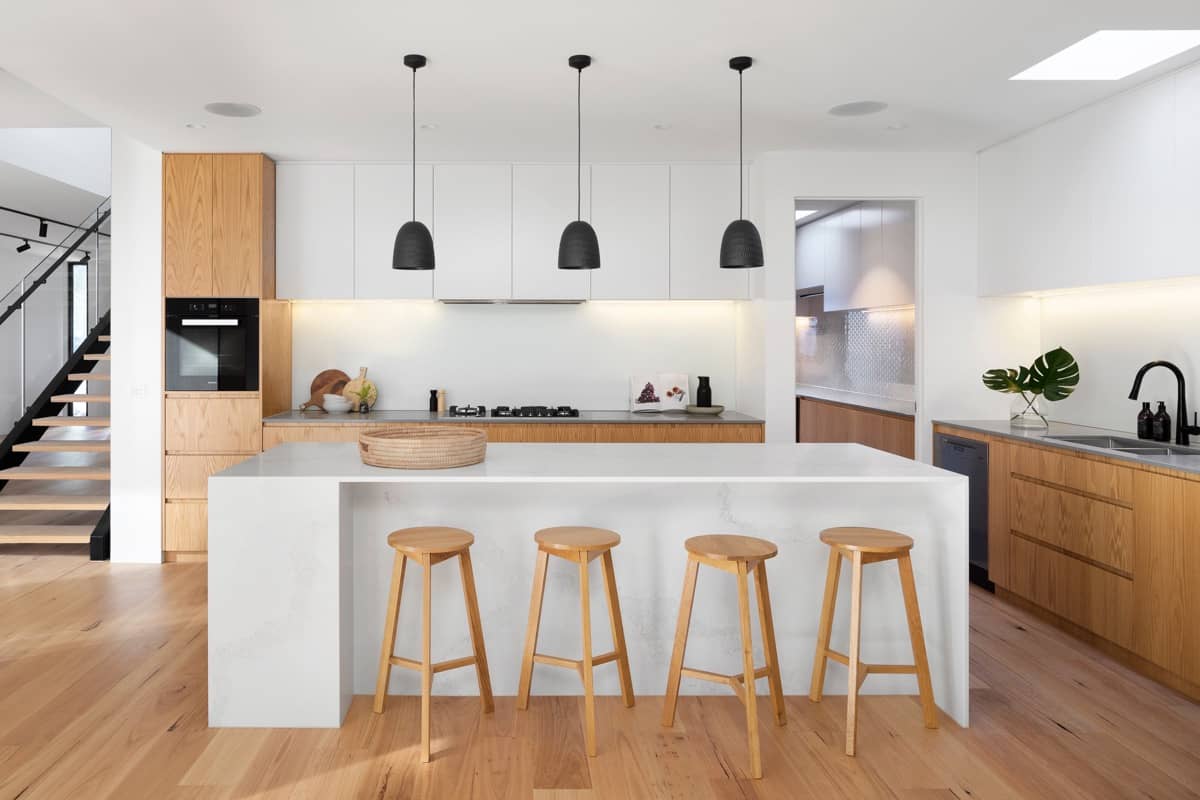
The Best Color Temperature for Your Kitchen Lighting
The color temperature of your kitchen lighting can have a big impact on the overall look and feel of the space, as well as your ability to prepare food and cook meals. In this blog post, we’ll discuss the different color temperatures available and help you choose the best one for your kitchen.
Bedroom
The bedroom is your personal sanctuary where restful sleep takes precedence over other activities. To ensure a calming environment conducive to sleep in this space, choosing the right color temperature becomes essential.
The optimal color temperature range for bedroom lighting typically varies from 2200K to 2700K. This range offers warm, dimmed lighting that promotes relaxation and tranquility.
Warm colors, such as soft yellows and oranges, create a cozy and intimate atmosphere, perfect for winding down before bedtime. By utilizing table lamps or wall sconces equipped with dimmable bulbs within this color temperature range, you can create the ideal ambiance for restful sleep in your bedroom.
Home Office
The home office is a space dedicated to productivity and concentration. To optimize your work performance in this area, selecting the appropriate color temperature for lighting is crucial.
The optimal color temperature range for a home office typically falls between 4000K and 5000K. This range offers bright, neutral lighting tones that promote alertness and focus.
Cool colors like blues and whites create an energizing environment that helps combat drowsiness during long working hours. By incorporating LED bulbs or fluorescent lights within this color temperature range into your home office setup, you can enhance productivity by providing ample illumination without straining your eyes.
Choosing the right color temperature for each room plays a vital role in creating the desired atmosphere and achieving specific objectives within those spaces. By understanding optimal ranges for various rooms like living rooms (2700K-3000K) with warm lighting tones, kitchens (3500K-4000K) with cool white tones to balance task lighting, bedrooms (2200K-2700K) with warm, dimmed lighting for tranquility and home offices (4000K-5000K) with bright neutral tones to boost productivity – you can transform these areas into functional yet aesthetically pleasing spaces tailored to their respective purposes.
Bathroom
Sure, here is more information about choosing the right color temperature for your bathroom:
The bathroom is a place where you need to be able to see clearly, but you also want a relaxing atmosphere. A color temperature of 3000K to 4000K is ideal for the bathroom. This will create a warm and inviting atmosphere without making the space feel too dark.
If you are applying makeup, you may want to use a cooler color temperature, such as 4000K to 5000K. This will help you to see the true colors of your makeup.
You can also use different light sources to create different moods in your bathroom. For example, you could use a vanity light for task lighting and recessed lights for general lighting. This will allow you to adjust the lighting to suit your needs, whether you’re getting ready for the day or relaxing in the bathtub.
Laundry room
The laundry room is a place where you need to be able to see clearly to sort and fold laundry. However, you also want a warm and inviting atmosphere to make the task more enjoyable. A color temperature of 3000K to 4000K is ideal for the laundry room. This will create a warm and cozy atmosphere without making the space feel too dark.
If you have a lot of natural light in your laundry room, you can get away with a cooler color temperature. However, if the room is mostly dark, you’ll need a warmer color temperature to create a more inviting atmosphere.
You can also use different light sources to create different moods in your laundry room. For example, you could use overhead lights for general lighting and task lights under the sink or over the washer and dryer. This will allow you to adjust the lighting to suit your needs, whether you’re folding laundry or doing a load of wash.
Entryway
Sure, here is more information about choosing the right color temperature for your entryway:
The entryway is the first room you see when you come home, so you want it to be well-lit and inviting. A color temperature of 3000K to 4000K is ideal for the entryway. This will create a warm and welcoming atmosphere without being too harsh.
You also want to make sure that the light is bright enough to see clearly when you come in and out of the house, especially at night. However, you don’t want the light to be so bright that it’s jarring.
You can use different light sources to create different moods in your entryway. For example, you could use a chandelier for general lighting and table lamps for accent lighting. This will allow you to adjust the lighting to suit your needs, whether you’re coming home from work or hosting a party.
Basement
The basement is often used for storage or hobbies, so you’ll want a light that is bright enough to see clearly, but not so bright that it’s harsh. A color temperature of 3000K to 4000K is ideal for the basement. This will create a warm and inviting atmosphere without making the space feel too dark.
If you have a lot of natural light in your basement, you can get away with a cooler color temperature. However, if the room is mostly dark, you’ll need a warmer color temperature to create a more inviting atmosphere.
You can also use different light sources to create different moods in your basement. For example, you could use overhead lights for general lighting and task lights under the workbench or in the storage areas. This will allow you to adjust the lighting to suit your needs, whether you’re working on a project or just relaxing in the basement.
Garage
The garage is a place where you need to be able to see clearly to work on cars, tools, and other projects. A color temperature of 4000K to 5000K is ideal for the garage. This will create a cool and bright light that is perfect for working.
A cooler color temperature will also help to reduce glare and make it easier to see small details.
You can also use different light sources to create different moods in your garage. For example, you could use overhead lights for general lighting and task lights under the workbench or in the storage areas. This will allow you to adjust the lighting to suit your needs, whether you’re working on a project or just storing your car.
Nursery
The nursery is a place where your baby will sleep, play, and learn. You want the lighting to be soft and warm to create a relaxing and calming atmosphere. A color temperature of 2700K to 3000K is ideal for the nursery. This will create a warm and inviting atmosphere without being too harsh.
A warmer color temperature can also help to promote sleep. Studies have shown that exposure to blue light can suppress the production of melatonin, a hormone that helps to regulate sleep. By using a warmer color temperature in the nursery, you can help your baby to fall asleep more easily and sleep more soundly.
You can also use different light sources to create different moods in your nursery. For example, you could use a nightlight for a soft and calming light or a dimmer switch to adjust the light level as needed. This will allow you to create the perfect atmosphere for your baby, whether they’re sleeping, playing, or learning.
Playroom
The playroom is a place where your children will be running, jumping, and playing. You want the lighting to be bright enough for them to see clearly, but not so bright that it’s harsh. A color temperature of 3000K to 4000K is ideal for the playroom. This will create a bright and inviting atmosphere without being too overwhelming.
LED light colors for every room
| Room | Recommended Color Temperature | Why this color temperature is ideal |
|---|---|---|
| Living room | 2700K to 3000K | Warm and inviting light that is perfect for relaxing and socializing. |
| Kitchen | 3500K to 4000K | Cooler light that is ideal for food preparation and cleaning. |
| Dining room | 3000K to 3500K | Warm and inviting light that is perfect for dining and conversation. |
| Bedroom | 2700K to 3000K | Soft and warm light that is ideal for sleep. |
| Office | 4000K to 5000K | Cooler light that is ideal for concentration and productivity. |
| Bathroom | 3000K to 4000K | Warm and inviting light that is perfect for grooming and getting ready. |
| Hallways and stairwells | 3500K to 4000K | Bright and clear light that is ideal for safety and visibility. |
| Laundry room | 3000K to 4000K | Warm and inviting light that is perfect for doing laundry and other chores. |
| Entryway | 3000K to 4000K | Warm and inviting light that is perfect for welcoming guests. |
| Basement | 3000K to 4000K | Warm and inviting light that is perfect for relaxing and entertaining. |
| Garage | 4000K to 5000K | Cooler light that is ideal for working on cars, tools, and other projects. |
| Nursery | 2700K to 3000K | Soft and warm light that is ideal for sleep and relaxation. |
| Playroom | 3000K to 4000K | Bright and clear light that is ideal for playing and learning. |
A cooler color temperature can also help to improve alertness and focus. This is important for children who are playing games or learning activities.
You can also use different light sources to create different moods in your playroom. For example, you could use overhead lights for general lighting and task lights under the play table or in the reading corner. This will allow you to adjust the lighting to suit your needs, whether your children are playing, reading, or taking a nap.
The Influence of Color Temperature on Mood and Perception
Exploring psychological effects of different temperatures on human emotions
Color temperature plays a significant role in influencing human emotions and perception. The psychological effects of different color temperatures have been widely studied and can have a profound impact on our overall well-being.
Warm colors, such as those with lower Kelvin values, evoke feelings of coziness, intimacy, and comfort. These hues, like reds, oranges, and yellows, create a welcoming atmosphere that encourages relaxation and social interaction.
On the other hand, cool colors with higher Kelvin values like blues, greens, and purples tend to promote calmness and tranquility. These colors are often associated with serenity and can create a refreshing ambiance in a room.
Cool-toned lighting is believed to reduce stress levels due to its soothing effect on the mind. Moreover, the intensity of color temperature also affects how we perceive spaces.
Brighter light tends to make an area appear more spacious while warm lighting can make it feel cozier and intimate. Understanding these psychological effects allows us to harness the power of color temperature in designing rooms that elicit specific emotional responses.
Warm vs Cool: How each impacts mood and cognitive performance
The distinction between warm and cool color temperatures extends beyond mere aesthetics; it also impacts mood and cognitive performance in various settings. Warm lighting enhances relaxation by creating a comfortable environment that promotes feelings of ease.
This is particularly beneficial for spaces like bedrooms or living rooms where we seek solace after long days or when winding down before sleep. Conversely, cooler lighting tones support heightened alertness by stimulating brain activity.
This makes them ideal for areas where focus is necessary, such as home offices or study rooms. The neutral quality of cool light helps keep individuals energized during tasks that require concentration or creativity.
It’s important to note that choosing the appropriate color temperature for a room depends on its intended purpose and the desired mood. For instance, a brightly lit kitchen with cooler light can foster an energetic and efficient atmosphere, making it easier to perform tasks like cooking or meal preparation.
On the other hand, a warm-toned dining area can create a cozy ambiance for relaxed gatherings with loved ones. Color temperature has a profound impact on our emotions, perceptions, and cognitive performance within different spaces.
The psychological effects of warm and cool lighting are significant in creating specific moods and influencing how we interact with our surroundings. By harnessing this knowledge, we can design rooms that cater to our needs, whether it be fostering relaxation or enhancing productivity.
Light Bulb Types for Different Color Temperatures
Incandescent bulbs: Warm light but less energy-efficient
Incandescent bulbs have long been a popular choice for their warm and cozy glow. Emitting light by heating a filament until it produces visible light, these traditional bulbs have a color temperature typically ranging from 2700K to 3000K, similar to the warm hues of sunlight during sunrise or sunset. The warm light created by incandescent bulbs is ideal for creating a relaxing and inviting atmosphere in living spaces such as bedrooms or living rooms.
Unfortunately, incandescent bulbs are not the most energy-efficient option available. They convert only about 10% of the electrical energy into visible light while the remaining 90% is lost as heat.
This inefficiency makes them less environmentally friendly and more expensive to operate compared to other lighting technologies. Consequently, many countries have phased out or restricted the use of incandescent bulbs in an effort to reduce energy consumption.
However, if you prioritize warmth and ambiance over energy efficiency, incandescent bulbs can still be found in specialty stores or online marketplaces. Their soft and familiar glow can add a touch of nostalgia and charm to your space, evoking a sense of comfort that cannot easily be replicated by other lighting options.
Conclusion
Understanding color temperature is crucial when it comes to creating the desired ambiance in different rooms throughout your home. By considering the optimal color temperature for each space, you can enhance comfort and productivity while reflecting your personal style. While incandescent bulbs offer warm lighting that creates an inviting atmosphere, they are no longer the most energy-efficient choice available.
Embracing newer technologies such as LED or fluorescent lighting can provide greater versatility with adjustable color temperatures and significant energy savings. Ultimately, finding the right balance between aesthetics and sustainability is key when selecting light bulbs for different color temperatures.
By making informed choices, you can transform your living spaces into havens of comfort and beauty while minimizing your environmental impact. Embrace the power of light and let it illuminate both your physical surroundings and your mood.

